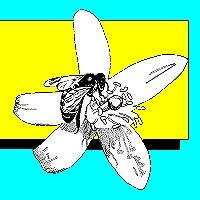Copy Link
Add to Bookmark
Report
HOMEBREW Digest #1996

This file received at Hops.Stanford.EDU 1996/03/28 PST
HOMEBREW Digest #1996 Thu 28 March 1996
FORUM ON BEER, HOMEBREWING, AND RELATED ISSUES
Rob Gardner, Digest Janitor
Contents:
Summary: Unmalted Wheat (Marty Tippin)
small (petite) yeast (Al Stevens)
Mushrooms in pilsner ??? (Al Stevens)
Vegas? me too! (James Gifford)
more on DMS and yeast/ first wort hopping (Andy Walsh)
Re: Dry Hopping in a Corny Keg, oxygen barrier bags (Jim Dipalma)
Heart's Counterflow chiller (hollen)
RIMS termperature evenness (hollen)
Damn!/Dry Ice/Ag (A. J. deLange)
Uniqueness of All Grain (Jim Busch)
Beer barrel usage?? (Roberts Freimuts)
Frustrated Brewer (correction) (Bill Rust)
Club Wort's Easter Invitational Competition (Scott Abene)
U.S. Homebrew Supply still in business? (Mark E. Thompson)
Dumping Beer, God, Color (Russell Mast)
HBD Survey decision (CASteveB)
My clean out the closet recipie (Mike White)
Bottle Deposits, variety!, Mad Hatters (Russell Mast)
Re: dead space in keg (Bryan Gros)
B-Brite Is... (Algis R Korzonas)
Honey Ale (Dave Riedel)
gravity tap keg ("Richard T. Adamson")
Orange County, CA Brewpubs (The Toe)
Wadworths brewery (Nigel Townsend)
Mailing Beer??? (Shawn Scolack)
Some Questions About Bottles (Shawn Scolack)
NO SUBJECT ("Stephen Palmer")
******************************************************************
* POLICY NOTE: Due to the incredible volume of bouncing mail,
* I am going to have to start removing addresses from the list
* that cause ongoing problems. In particular, if your mailbox
* is full or your account over quota, and this results in bounced
* mail, your address will be removed from the list after a few days.
*
* If you use a 'vacation' program, please be sure that it only
* sends a automated reply to homebrew-request *once*. If I get
* more than one, then I'll delete your address from the list.
******************************************************************
#################################################################
#
# YET ANOTHER NEW FEDERAL REGULATION: if you are UNSUBSCRIBING from the
# digest, please make sure you send your request to the same service
# provider that you sent your subscription request!!! I am now receiving
# many unsubscribe requests that do not match any address on my mailing
# list, and effective immediately I will be silently deleting such
# requests.
#
#################################################################
NOTE NEW HOMEBREW ADDRESS hpfcmgw!
Send articles for __publication_only__ to homebrew@hpfcmgw.fc.hp.com
(Articles are published in the order they are received.)
Send UNSUBSCRIBE and all other requests, ie, address change, etc.,
to homebrew-request@hpfcmgw.fc.hp.com, BUT PLEASE NOTE that if
you subscribed via the BITNET listserver (BEER-L@UA1VM.UA.EDU),
then you MUST unsubscribe the same way!
If your account is being deleted, please be courteous and unsubscribe first.
Please don't send me requests for back issues - you will be silently ignored.
For "Cat's Meow" information, send mail to lutzen@alpha.rollanet.org
ARCHIVES:
An archive of previous issues of this digest, as well as other beer
related information can be accessed via anonymous ftp at
ftp.stanford.edu. Use ftp to log in as anonymous and give your full
e-mail address as the password, look under the directory
/pub/clubs/homebrew/beer directory. AFS users can find it under
/afs/ir.stanford.edu/ftp/pub/clubs/homebrew/beer. If you do not have
ftp capability you may access the files via e-mail using the ftpmail
service at gatekeeper.dec.com. For information about this service,
send an e-mail message to ftpmail@gatekeeper.dec.com with the word
"help" (without the quotes) in the body of the message.
----------------------------------------------------------------------
Date: Mon, 25 Mar 1996 21:45:35 -0600
From: Marty Tippin <martyt@sky.net>
Subject: Summary: Unmalted Wheat
I received comments on how to best use unmalted raw wheat from several
people; the comments are summarized below (sorry for not including credits
for the individual suggestions...)
* Crush the raw wheat and boil in water for 20 to 30 minutes to gelatinize
the proteins. Apparently boiling the wheat makes the proteins more soluable
and accessible to the enzymes.
One person said that he soaked the grains overnight and then boiled; there
were various other suggestions to mix the crushed wheat with some of the
malted barley, hold at one or two temperature rests as in mashing, then to
boil the whole mess for 10 minutes or so. The stuff is prone to scorching
and sticking to the pot, so keep an eye on it while boiling.
* For flaked or torrified wheat, boiling is apparently not necessary.
* Using unmalted wheat will give a sticky, gummy, slow, prone-to-sticking
sparge. An extended protein rest will probably help prevent a stuck sparge.
Starting the lauter slowly will also help prevent a stuck sparge. If it
does stick, stop the lauter, stir the grainbed and add boiling water to
raise the temp if necessary to keep around 165F.
* For unmalted wheat comprising 10% or so of the total grist, conversion
shouldn't be a problem; 20% or more unmalted wheat may require addition of
amalayse enzyme and/or use of 6-row barley malt to assure conversion.
* Chill haze is very likely; hot and cold break will be enormous.
* Using rice hulls may help in forming the grain bed since wheat has no hull.
I managed to get my batch done on Saturday, after only receiving a couple of
replies, with execellent results. The grain bill called for 5 lbs 2-row
barley, 1.5 lbs. wheat malt and 1.5 lbs. of unmalted wheat. To prepare the
unmalted wheat, I crushed it and boiled in 3 to 4 quarts of water for about
30 minutes. It scorched and was generally hard to work with. I wound up
with some stuff that looked pretty much like cooked oatmeal.
(My brewing system these days is a converted keg setup with a pump for
recirculating the sweet liquor during the entire mash and pumping it off
during the sparge - a pseudo-RIMS system, I guess, since I use a propane
burner for heat. I used that system for this batch - the URL is
http://www.sky.net/~martyt/2tier.html if you're interested)
For the balance of the grain bill, I did an acid rest at around 105F, after
which I boosted the temp to about 140F and added the cooked unmalted wheat.
It made a sticky solid mess out of the entire grain bed, and I had to stir
it every so often while recirculating the wort to keep it from sticking and
preventing flow to the pump. I got sidetracked during the intended 30
minute rest and it wound up being more like 45 or 50 minutes at 140F.
I then boosted the temp to 155F and held until idoine said starch conversion
was complete, plus another 20 minutes for safety. Total time was about 50
minutes.
>From there, I went to mash-out at 165F for 10 minutes and started the
sparge, using 168F treated brewing water. Surprisingly, the sparge went
without a hitch, and I collected about 7 gallons of wort in about 45
minutes. I had to recirculate with the pump for about 5 minutes in order
for the runoff to clear up, but after that it was smooth sailing.
The best surprise was yet to come, though, as I took a gravity reading and
calculated my extract efficiency: I wound up with 34.5 pts/lb/gallon!!!
This was far higher than I was expecting, and almost 2 points higher than
any previous batch I've done. Apparently I didn't have any trouble getting
conversion, even though wheat (malted and unmalted) made up 3/8 of my total
grain bill.
The 90 minute boil was uneventful and I wound up with 5.5 gallons at 1.050.
Lots of hot and cold break. Fermentation got underway pretty quickly and I
think I'll have a pretty nice beer when I'm done. If anybody wants the
complete recipe, just let me know.
-Marty Tippin
martyt@sky.net
------------------------------
Date: 25 Mar 96 23:07:19 EST
From: Al Stevens <72704.743@compuserve.com>
Subject: small (petite) yeast
In previous posts, there was talk of petite mutants.
This got me thinking about a comment that a local microbrewer told me about his
yeast. He said that you could always tell his yeast ( under a microscope)
because there were two distinct parts, one big and the other little. He said
that they would line up in a matrix big,little,big,little etc. He also said that
if you cultured just one part (big or small) it would revert to big,little
within one or two generations.
Now, his beers are GOOD, nice hoppy pale ales, and I know of many homebrewers
that would like to get hold of his yeast. Also, he reuses his yeast generation
after generation with no problems.
Could this be similar to what the guy who noticed small yeast was finding.
anyone with any ideas ?
Al Stevens
Bennies Corners
------------------------------
Date: 25 Mar 96 23:07:17 EST
From: Al Stevens <72704.743@compuserve.com>
Subject: Mushrooms in pilsner ???
I think someone is pulling my leg.
In a discussion with a fellow home brewer and beer aficionado, I was telling him
about a great new pilsner from Niagara named Saaz Pilsner. I said that the name
was redundant because Saaz is or should be the predominant hop in a pilsner.
He then said it couldn't be a real pilsner unless it had pilsner mushrooms in
it. He said that in the hills around Pilsen, grow some strange mushrooms, and
these are used in the beer. I went along with it, but I think he was serious.
Has anyone heard about this ?? or is this the start of another beer legend?
Thanks
Al Stevens
Bennies Corners
------------------------------
Date: Mon, 25 Mar 1996 23:08:55 -0600 (CST)
From: James Gifford <brewer@server.elysian.net>
Subject: Vegas? me too!
Just the question I was going to ask. kcollins asked about brewpubs and
such in the Las Vegas area in HBD 1993. If anyone has any information, I
would be glad to put it to good use when I go in June.E mail to
brewer@elysian.net or just post it and I'll find it sooner or later.
Thank you.
- --
Jay Gifford
Brewer@elysian.net
- --If this were an actual tagline it *might* be funny.
------------------------------
Date: Tue, 26 Mar 1996 17:38:04 +1000
From: Andy Walsh <awalsh@crl.com.au>
Subject: more on DMS and yeast/ first wort hopping
This is a follow-up post to my previous one on DMS (trying to beat the
flame-throwers!).
Levels varied between 17ug/l and 76ug/l for the same wort with different
yeast types (>4:1 range! 30ug/l is regarded as the threshold). Only ale
yeasts were used.
A tea-towel covered immersion chiller was used for cooling (30 mins or so).
To be fair to the brewing text authors, George Fix for example, says
(Principles of BS),
"There should be some net reduction of DMS in the fermentation, provided
there is no bacterial activity. The dominant mechanism appears to be simple
CO2 scrubbing as opposed to yeast metabolism. The extent of this reduction
depends on the rate of CO2 evolution, which in turn will vary with yeast
strain and fermentation temperature. It was once thought that DMS could be
created in the fermentation by yeast-induced reduction of DMSO, another
precursor found in malt. But we know that this does not occur with beer
wort in the absence of bacterial infection. However, the extent to which
DMS will be 'scrubbed out' in the fermentation will vary with different
yeast strains and different fermentation conditions. Production of DMS
from DMSO can occur if the wort is infected."
None of us could detect any infection in any of the beers (2 suspected
infected ferments were discarded from the study).
I do not know if the beer with lowest DMS was the fastest fermenter and
vice versa. I'll find out and post later. All beers were made with yeasts
made up from slants (provided by Dave Draper), with similar pitching levels
(except for the one with highest DMS levels, which was a dried packet yeast.
The next highest was around 70ug/l however and was a slanted yeast).
Fix provides an example where a typical beer is cooled over 60 mins giving
92ug/l (prefermentation levels). The same beer cooled over 30 mins has 53
ug/l (prefermentation). This is a 42% difference. (1.7:1).
I would suggest that given a particular malt (which all tend to be similar
anyway in SMM levels), that *for homebrewers* the fermentation process is in
fact a *dominant* factor in final DMS levels, and is not a secondary effect
to wort cooling time, as is commonly believed.
*********
Tracy gets stuck into Dave Draper's interpretation of 1st wort hopping.
Firstly, Dave was summarising the actual article from Brauwelt, not George
Fix's interpretation of it (which lacked detail and prompted many questions,
which was why Dave posted his own summary). I have read the original article
and thought he summarised it quite well. Thanks, Dave, for taking the time
and trouble to explain the article to those of us without access to the
original. Thanks George, too, for alerting us in the first place.
Secondly, George Fix at no time suggested first wort hopping with Columbus
hops. He said it worked well with *low alpha* noble types such as Ultra.
He did mention Columbus in the same post, but recommends it as a general
purpose US northwest hop, and does not connect it with the FWH thing. I
have samples of Ultra that have 2.5%aa and my Columbus is 12.1%aa (thanks
Fred!). Anybody who is crazy enough to FWH with Columbus who does not adjust
for the extra IBUs ought to have his head examined. Dave was quite correct
in saying the original article says *not* to adjust the IBU levels, but
remember it is referring to *low* alpha hops.
There were actually *two* articles in that Brauwelt on FWH. The other was on
when to add your hops to your lagers for best results ("How the chemical
characteristics of Tettnanger hops change during beer brewing" M. Mitter).
Whirlpool hopping was a definite no-no (similar to soak hopping). FWH won
narrowly from an addition 15 minutes before end of boil. "The result would give
rise to the conclusion that a certain boiling time is important at least for
some hop oil components so that they might oxidise or be expelled completely".
(Dry hopping was not covered in this analysis).
- --
Andrew Walsh CHAD Research Laboratories
Phone (61 2) 212 6333 5/57 Foveaux Street
Fax (61 2) 212 1336 Surry Hills. NSW. 2010
email awalsh@crl.com.au Australia.
------------------------------
Date: Mon, 25 Mar 96 14:59:30 EST
From: dipalma@sky.com (Jim Dipalma)
Subject: Re: Dry Hopping in a Corny Keg, oxygen barrier bags
Hi All,
In HBD#1992, Michael E. Ladue asks:
>What is the technique for dry hopping in a Corny keg? I know that it's
>possible, I'm just not sure how to do it.
>One method that I've heard of is to just put your hop pellets in the
^^^^^^^^^^^
>keg...no sock, no marble, no nuthin'.
I would not recommend using pellets in a corny keg. Two people that I know
that tried this both had their keg's plumbing clogged by pellet sludge that
seeped right through a nylon hop bag.
I've had great success using whole leaf or plug hops in a nylon hop bag.
The bag is sanitized by a brief dip in boiling water, add the hops, tie it
off and drop it in. It's not necessary to use a marble or weight in the bag -
the aromatics are soluble, you can extract them by just soaking them in beer.
Someone else I know put marbles in the bag the first time he kegged. The bag
sank, got involved with the end of the pickup tube, and caused problems. He
ended fishing the bag out with a coat hangar.
The nice thing about dry-hopping in a corny keg is that it doesn't take a
lot of hops to get a lot of aroma. With the keg sealed, there is no escaping
CO2 to scrub out the aromatics. I would suggest using 1/2 ounce to start,
which'll give you a *lot* of hop aroma, and make adjustments from there.
********************************************************************
In HBD#1993, Todd Orjala writes:
>Does anyone know of a retail source of oxygen barrier
>bags suitable for preserving hops?
Don't know about oxygen barrier bags, you might consider using 1 quart
mason jars. Cheap, readily available, can be re-used repeatedly, and glass
is not very oxygen permeable. I've also found they save on storage space,
as you can pack the hops in the jar fairly tightly, at least more so than
with a bag.
Cheers,
Jim
------------------------------
Date: Mon, 25 Mar 96 08:34:50 PST
From: hollen@vigra.com
Subject: Heart's Counterflow chiller
I have been toying with the idea of switching from immersion to
counter flow chiller use and if I do, have pretty much settled on the
Heart's brand. Anyone have direct experience with one of these?
As previous discussions have pointed out, when you reply, please
include some information about the normal temperature of your water
since this factor makes a big difference in how well a chiller
performs. Here in San Diego, where the water is about 65F year round,
it is really different than like somewhere in Minnesota where it gets
down to 45F in the winter.
Please don't let this become a counterflow vs. immersion debate, I
have heard it all and don't need to hear it again.
thanks,
dion
------------------------------
Date: Mon, 25 Mar 96 08:23:36 PST
From: hollen@vigra.com
Subject: RIMS termperature evenness
Well, after 4 months of not brewing, I have finally gotten to brew
again. Work and brew club duties have gotten higher priority.
Anyway, months ago, I promised to report on the evenness of
temperature in a RIMS mash bed. This is the first brew I have done
since I got my BruProbe working and was a perfect opportunity.
When the mash was in the sacchrification rest at 154F (that is the
temperature of the outflow of the wort from the heater chamber), I
waited 15 minutes to allow equilibrium to be established in the mash
bed, stopped flow and heater and probed all around the mash, high and
low and all around. The most difference I got was about 1.5 degrees
F.
So I have to say, a well implemented RIMS design produces evenness of
temperature of the mash. However, I must warn you, that it *is*
possible to poorly implement a RIMS system and have problems, so I
cannot make this a blanket statement about *all* RIMS systems.
dion
------------------------------
Date: Tue, 26 Mar 1996 09:27:01 -0500
From: ajdel@interramp.com (A. J. deLange)
Subject: Damn!/Dry Ice/Ag
In a post in #1994 i wrote "lowers" the pH when I meant raise. I can't get
it through my thick skull that when hydrogen ion concentration goes down
pH goes up. Actually it isn't my fault at all. Curse you, S.P. L. Sorenson!
Anyway, the offending sentences should read:
"Boiling drives off the dissolved carbon dioxide and this raises the pH. At
higher pH bicarbonate is converted to carbonate..."
* * * * * * * * * * * * * * * * * * * * * * * * * * * * * * * * * * * * *
I'm not sure than Domenick Venezia is entirely serious in his question
about putting 5 # dry ice into a CO2 bottle but if this were done and the
bottle sealed the pressure would rise as the dry ice evaporated until it
reached the point (dependent on temperature) where CO2 can exist as a
liquid. The remaining dry ice would then melt under this pressure and you
would have mostly liquid with some gas, total weight 5 Lbs. Water included
would form corrosive carbonic acid.
* * * * * * * * * * * * * * * * * * * * * * * * * * * * * * * * *
Rich Byrnes asks about adding colloidal silver to brewing water. This is
probably not a good idea as it is toxic to bacteria which is why it is used
in Brita filters and perhaps toxic to yeast as well. This raises the
question as to the suitability of Brita processed water for brewing. Anyone
have any relevant experience?
As for natural water, in the US silver concentrations range from none to 2
ug/L. The usual symtoms of argyria (silver poioning) is a ghostly grey
appearance of skin and eyes. If your kids start to look this way, perhaps
you can take them for chelation therapy. I understand the nuts are very big
on that too. Fortunately, it is hard to induce toxic effects by oral
administration although concentrations of 0.4 to 1 mg/L have caused damage
to kidneys, liver, and spleen in rats. Don't know how long the exposure
was. The USEPA has a primary (health hazzard) limit of 50 ug/L for
drinking water. Argyria aside, it seems to me that if you injested silver
in bacteriostatic quantities it would kill off your enteric flora. This
can't be a good thing.
A.J. deLange Numquam in dubio, saepe in errore!
ajdel@interramp.com
------------------------------
Date: Tue, 26 Mar 1996 09:47:02 -0500 (EST)
From: Jim Busch <busch@eosdev2.gsfc.nasa.gov>
Subject: Uniqueness of All Grain
I hate to jump in for fear of reviving the extract versus all grain
debate but I wanted to comment on this:
<Howard in Baltimore needs "convincing" about all-grain brewing. I think it's
<been said a million times that, properly and carefully done, an extract beer
<can be every bit as good as an all-grain beer.
Some extract beers can rival some all grain beers but it is near
impossible to brew a lot of interesting styles using extracts. For
example, Im about to brew a Bamberg style Rauchbier using about 95%
Rauchmalz smoked over Beechwood, cant be done with extracts. Another
example would be a beer that is intended to be very highly attenuated,
the extract brewer has no control over the degree of attenuation other
than to decrease the percent attenuation by increasing unfermentables.
(well, I guess you could add sugar....)
Another example is Tripel, where the desire is a very pale colored but
highly attenuated beer, pretty hard to do with extracts and near impossible
to do with a concentrated boil. I could go on but the point is that
grain brewing gives the brewer control and flexibility that is difficult
or impossible to achieve with extracts.
Since I dont want to be perceived as extract bashing, Ill finish with
some tips to make better extract beers, some of which Ken already noted.
Buy a big kettle and do full wort boils. This will keep the beer
color lighter, and will be useful when/if you do go all grain. This
also gives better hop utilization.
Since you are doing full wort boils, you need a chiller.
Use light unhopped extract, I hear Alexanders is good these days.
Do a partial mash.
Use high quality hops and yeast and always make a yeast starter.
Ferment ale yeast near 65F.
Take careful notes!
Brew on,
Jim Busch
------------------------------
Date: Tue, 26 Mar 1996 10:06:41 -0500 (EST)
From: Roberts Freimuts <freimuts@acs.ryerson.ca>
Subject: Beer barrel usage??
Does anyone have any experience in the usage of wooden barrels for the
storage and serving of homebrewed beer?
I have been given a new twentytwo litre wooden barrel that I would like
to use for parties to serve beer.
How should I prepare the barrel before I put beer into it? How should I
clean it afterward?
The barrel is meant for accassional use at parties and not for day to day
storing of beer. At bottling time I would syphon the primed beer into the
barrel instead of bottles. That is why it is carboy sized.
Thank you,
Roberts
. . . . . . . . . . . . . .
Roberts Freimuts <freimuts@acs.ryerson.ca>
13 Nottingham Drive
Etobicoke, Ontario,
Canada M9A 2W4 (416)233-9552
------------------------------
Date: Tue, 26 Mar 1996 11:19:46 -0500
From: Bill Rust <wrust@csc.com>
Subject: Frustrated Brewer (correction)
Oops. It seems I made a slight omission. Carl Etnier informed me that I
left out an important piece of info on my last post...
>Bill wrote:
>
>>Yes, 3/4 corn sugar or brown sugar (my favorite) to 5 gallons will carbonate
>>to the desired level for pale ales/IPAs.
>
>That should be 3/4 cup! Anything else, especially (3/4)*5 gallons, will
>give disasterous results.
I don't think the results would be disastrous; They would be caramel sludge!!
Skol!
---------------------------------------------------------------------
| Yes, it's grain...which any fool can eat;
Bill Rust | but, for which the Lord intended a more
Master Brewer | divine means of consumption. Let us give
Jack Pine Savage Brewery | praise to our maker and glory to his
Shiloh, IL (NACE) | bounty, by learning about beer. FRIAR TUCK
---------------------------------------------------------------------
------------------------------
Date: Tue, 26 Mar 1996 10:54:05 -0600
From: Scott Abene <skotrat@wwa.com>
Subject: Club Wort's Easter Invitational Competition
Hey everyone,
Just as reminder that the deadline for the Club Wort Easter Invitational
Competition is just around the bend.
For more information please email The Mighty Chuck Gollay at
Brudaddy@wwa.com or
go right to the competition homepage at:
http://miso.wwa.com/~skotrat/cwort/easter.htm
This competition was a great success last year, and we look forward to a
good healthy showing this year.
Thanks to everyone that enters,
-Scott "watch who you're calling a BOZO Babcock" Abene
****************************************************
* Scott Abene *
* skotrat@wwa.com *
* http://miso.wwa.com/~skotrat *
* (Skotrats Official Homebrew "Beer Slut" Webpage) *
* "Get off your dead ass and brew" *
****************************************************
------------------------------
Date: Tue, 26 Mar 1996 8:25:28 PST
From: Mark E. Thompson <markt@hptal04.cup.hp.com>
Subject: U.S. Homebrew Supply still in business?
Full-Name: Mark E. Thompson
Does anyone know if this company is still in business? I ordered
from them in Feburary, but now i call the old number and it's been
disconnected.
Mark Thompson
Details: U.S. Homebrew Supply Co.
1304 E. Algonquin Rd.
Algonquin, IL
708-854-0832
------------------------------
Date: Tue, 26 Mar 1996 11:37:13 -0600
From: Russell Mast <rmast@fnbc.com>
Subject: Dumping Beer, God, Color
Someone wrote me private e-mail about how he dumped a batch without tasting
it once, because it had this terrible, terrible smell, that hurt his nose.
And he said that I should maybe make an exception in my "don't dump without
tasting it".
Hell no. A lot of perfectly normal ferments will blow off some really funky
odors, some strange sulfur smells about as pleasant as huffing burning tires.
Two of the best beers I ever brewed, one was a Bock the other a Weizen, gave
off the most foul odor imaginable. Was I worried? The first time, hell yes.
But, I stuck it out, and it was great beer.
So, if you're even CONSIDERING dumping a batch, especially if you've brewed
less than a million batches, don't do it. Go soak your head, instead. Just
let it finish. Bottle or keg it. And wait a couple weeks. If it's really
foul, and you don't have room to keep it around, then dump -most- of it. But
not all. Save a few bottles for a few months. If only to educate your
pallete.
It's easy to get an infection or other flaw that makes your beer worse than it
should be, but it's hard to get one that totally ruins it. (Unless your trying
to, but that's cheating. And stupid.)
Don't dump it. Just don't. Ever.
> From: robtrish@mindlink.bc.ca (Rob Lauriston)
> Subject: Rob G., HBD God, amen.
> The auto-reply to postings which gives the subject line of upcoming posts is
> a really valuable feature. Not only to avoid too many repeats, but just for
> interest's sake. Apologies for suggesting extra work for my favourite
> deity, but it would be great if this were available without posting.
I will occasionally post an empty message and then immediately cancel it. It
works. But, yeah, it probably won't be too much extra work. Still, you can
do my trick in the meantime. (And, yeah, Rob G is God.)
> From: KennyEddy@aol.com
> Subject: Beer Color / Iron In Water
>
> Scott Bukofsky asks about calculating beer color.
>
> The formula is basically to take *each* ingredient -- grain, extract, sugar,
> fruit, old nylons -- and multiply its weight in pounds times its lovibond
> color rating. Add these all together, and divide by the batch size in
> gallons.
However, depending on the length and size and vigor of your boil, as well as
some fermentation variables, your beer can end up being reasonably far off
from the calculated values. (Usually darker, especially due to kettle
reactions.)
-Russell Mast
this post copyright 1996 Al Korzonas
------------------------------
Date: Tue, 26 Mar 1996 12:51:19 -0500
From: CASteveB@aol.com
Subject: HBD Survey decision
Thanks to all of you who replied to my thoughts on doing a survey for HBD. I
have, at this time, decided to put off the idea for conducting the survey.
There are a couple of reasons, which were made clear by those who responded
to me via e-mail.
1. How to administer the survey?
- A survey of any depth would take up quite a bit of band width to post on
the digest, and be several posts long.
2. How can people respond in a standardized format which would allow
automated retrieval and tabulation of information?
- This is probable the biggest deterrence. I need to come up with an
efficient, simple way for people to respond. Otherwise they won't, and the
survey will be less accurate. Along with making it easy for them to respond,
It needs to be standardized in a format that will allow me to write some
code to extract the information automatically and quickly
I do have some potential solutions to these problems(mostly #2), but am not
completely convinced of their potential. I have not completely abandoned the
idea of a survey, just put it on the back burner for a little while to let it
simmer in my skull.
Also, Thanks to those that responded to my question about beer related travel
in Europe. I have found a book that has help immeasurably, "The New World
Guide to Beer," by Michael Jackson. This book is a wealth of information
regarding styles of beer and brewing in regions around the world. It has
allowed me to narrow down my travels to a few key centers of brewing. I
would recommend this book to anyone
interested in the history of brewing, beer styles, and beer culture.
Thanks again,
Steve B
CASteveB@aol.com
------------------------------
Date: Tue, 26 Mar 1996 15:08:11 -0600
From: mike@datasync.com (Mike White)
Subject: My clean out the closet recipie
I am too short on funds to order supplies and I'm out of homebrew! EGAD!
So I'm cleaning out the stuff in the closet...I'll let you know how it turns
out.
For a 2 to 2 1/2 gallon batch:
1/4 lb. Munton's Crushed Crystal 2-row Malt
1/4 lb. Roast Barley Crushed
1/2 oz. Willamette Hops Pellets (boiling)
1/2 oz. Northern Brewer Hops Pelletts (finishing)
2 lbs. Laaglander Dark Dried Malt Extract
1 packet Canadian Ale yeast this came with an Ironmaster Canadian Ale Kit
1/2 to 3/4 cup of corn sugar
Place Munton's & Roast Barley in grain bag and put in pot with 2 gallons of
cold water. Bring water to a boil. Remove grain bag as soon as water
starts boiling. Add Willamette Hops and Laaglander DME. Boil for 1 hour.
Add Northern Brewer hops and boil 5 more minutes. Cool and add to
fermenter. Pitch yeast. Ferment until done. Then bottle with corn sugar.
O.G. - 1.034
Notes: As I write this the wort is cooling prior to going into the
fermenter. The ingredients used were all about 6 months old or older but
were stored in airtight bags (I feel lucky to have a vacuum sealer) in a
cool dark closet. The malt looked and smelled good as did the Willamette
hops. The Northern Brewer hops smelled a little weak but I used them anyway.
I used my own well water, which I have never had tested, for this batch. I
think from the orange stains in my sink that I have some iron content in my
water.
I'll post an update when I taste this batch...It looks interesting. Should
be something like an English Mild. We'll see.
- ------------------------------------------------------------
Thought for the day:
Money may not buy happiness, but it will buy something VERY close.
- ------------------------------------------------------------
\\\|///
\\ - - //
( @ @ )
\ (_) /
\ o /
+----------------------oOOo-----oOOo-----+
| Mike White mike@datasync.com |
| |
+---------------------+--------Oooo------+
oooO ( )
( ) ) /
\ ( (_/
\_)
------------------------------
Date: Tue, 26 Mar 1996 15:36:31 -0600
From: Russell Mast <rmast@fnbc.com>
Subject: Bottle Deposits, variety!, Mad Hatters
> From: tapp@usit.net
> Subject: DAB mini-kegs
> Typically the deposit is less than you would pay to buy them. I've seen
> much hand-wringing about the morality of acquiring kegs, particularly big
> and very expensive draft kegs, this way. I respect that concern for private
> property and obeying the rules, but I have to wonder whether mini-kegs are
> actually shipped back to Germany for refill.
It's possible that they merely scratch the trademarks off and sell them to
homebrew-supply stores. I recommend asking someone that works at the liquor
store. Act curious, not purposeful.
Still, immoral or not, this is often not illegal. In the case of the elusive
$5 carboy, I think it might be illegal. In the case of yer 10 cent beer
bottle, probably not.
> I doubt even more that most
> glass bottles are shipped back to bottling plants from those states that
> require deposits
Of course they're not. Those deposits are generally there to encourage
recycling, not re-use. (Actually, the main impetus in Michigan, one of the
first states to pass such a law, was to curb littering. Seems to work quite
well.)
> I'd appreciate being informed of usual practices after return for deposit of
> mini-kegs, bar longneck and Grolsch/Fischer-type bottles, and lighter-weight
> bottles, in states that have a bottle deposit regime.
The lightweight bottles are definately not refilled. I think it's illegal to
do so, in fact. The bar longneck bottles are, usually, and the folks at some
bars get a bit uppity if you try throwing them out.
> In any event, you can get various taps for dispensing from the mini-kegs and
> replacement bungs for sealing them, at homebrew stores.
Yeah, and if you still feel bad about using them, you can always just take
them back for the deposit after running a couple batches through them.
> From: Kelly Heflin <kheflin@monmouth.com>
> Subject: Brewing Addiction
> I'm starting to think my local supplier is limited to certain malts. All my
> recipes seem to basically be the same. 8-10 lbs of Helles 2 row malt. A
> little crystal malt. Then the hop varities and yeast change for all the
> recipes, but I seem to think I should be changing the malt varities....
You should also try using a variety of yeasts, spices, fruits, and adjuncts.
I'm not talking corn & rice <yawn> but unmalted barley, wheat, rye, Kef,
try wild rice, buckwheat. Try other sugars like honey, sucanat (tm), molasses,
candi sugar, fruit (i said that already), asparagus, you name it.
That, to me, is one of the most exciting aspects of homebrewing. Not only can
I make a decent impression of something I could buy in the store, I can make
stuff that I can't buy in any store. Careful not to overdo it at first, just
one kind of fruit or one spice or one funny grain at a time, at least at first.
Also, 2-row is the best, but if it's only US two row, you're missing out.
There is a difference between the different maltsters. (Also within the US
there are differences.) I'm not saying that all foreign malts are "better"
than all US malts, but some are more appropriate for some styles than others.
> From: "Rich Byrnes" <rich.byrnes@e-mail.com>
> Subject: Brita Systems/ Bad Suppliers
> This weekend she bought an 8 Oz
> bottle of colloidal silver (30-33 ppm) as a substitute to
> all the damn antibiotics my kids have been taking
I would definately talk to a doctor (yes, a western-style one)
before injesting this or feeding it to anyone else. Maybe you
have already, but I, for one, don't think that imbibing heavy
metals is a really good idea in general. You might as well be
mixing mercury into your beer. (Yes, let's get that old thread
out!) Honestly, it might be perfectly safe, but I'd be pretty
skeptical.
-R
------------------------------
Date-Warning: Date header was inserted by ctrvax.Vanderbilt.Edu
From: Bryan Gros <grosbl@ctrvax.Vanderbilt.Edu>
Subject: Re: dead space in keg
Christopher M. Goll" <cgoll@cc-mail.pica.army.mil> writes:
> My brew kettle is a converted keg, with a stainless steel nipple
> welded in. Connected to this is a slotted copper manifold which
> (sort of) conforms to the interior circumference of the keg. It works
> very well at straining out floating hop flowers and lets me drain
> without disturbing the break material. However, the nipple/manifold
> assembly is positioned too high and leaves at least a gallon (if not
> two) of wort in the keg when I drain the cooled wort.
The previous suggestion of "inverting the domed bottom" was a good
one. What I have on my keg is a circular manifold that is about half the
diameter of the keg. It sits on the bottom of the keg, and it connects
to the nipple via an offset copper piece like this:
XXXX -->to nipple on side of keg
XX
XX
to manifold <-- XXXXX
I leave a bit of wort behind, but nothing like a gallon.
- Bryan
grosbl@ctrvax.vanderbilt.edu
Nashville, TN
------------------------------
Date: Tue, 26 Mar 96 12:38:52 CST
From: korz@pubs.ih.att.com (Algis R Korzonas)
Subject: B-Brite Is...
I just got off the phone with Crosby and Baker. It *was* true, as John
posted, that B-Brite *used* to be Sodium Percarbonate and that when you
mixed it with water it would make something similar to Hydrogen Peroxide
and Sodium Carbonate. However, the formula has changed and now it is
made primarily of Sodium Metasilicate. Hmmm... I don't know enough
chemistry to tell you if that, mixed with water, will make a sanitizer,
but I suspect it won't. Could some chemists chime in and verify this?
To the best of my knowledge, One-Step is still primarily Sodium Percarbonate
and is still a sanitizer (although they have not received approval from the
government to label it as such).
Al.
------------------------------
Date: Tue, 26 Mar 1996 17:41:41 -0800 (PST)
From: Dave Riedel <RIEDEL@ios.bc.ca>
Subject: Honey Ale
I've been considering making a honey ale (like that of the Portland Brewing
Company), but I'm unsure of how much honey to use. A quick scan of the Cat's
Meow suggested that 1-2 pounds is most commonly used.
How much honey is needed to be able to taste it's presence in the beer
without resulting in a cidery taste? Is this possible?
I was considering the following recipe (partial mash):
4.25 lbs 2-row
2.00 lbs light malt extract
1.00 lbs honey
1 oz Willamette hops
Wyeast American Ale (something on the clean side)
Would this recipe yield a decent beer with honey accents?
I deliberately kept the hopping low and omitted crystal to allow the
honey to come through.
Any thoughts?
Dave Riedel
Victoria, BC CANADA
------------------------------
Date: Tue, 26 Mar 1996 21:23:22 -0500
From: "Richard T. Adamson" <radamson@mnsinc.com>
Subject: gravity tap keg
Dear Wisdom O'Net:
I have an old AB gravity-type half-barrel that I want to use in my outdoor
brewery. Due to its very odd shaped bottom, it won't do well as a brew or
mash tun. I do think it would work very well as a hot liquor tun - one
never needs to drain the water completely. It is the drain (the tap valve)
that I write about. I have the 2-piece tap that goes with it and the bottom
gravity tap would work perfectly as the exit path for the liquor (add ball
valve and ...). The question is this: Will the valve that is installed in
the keg hold up to boiling-water temperatures? That bottom tap piece would
always stay in and "on". That tap piece is all steel anyway; wondering if
any "rubber" parts in keg "valve"?
Anyone have any experience with these old guys?
Thanks
Rick Adamson.
+----------------------------------------------------------------------+
|Richard T. Adamson Brewer, Skier, Die-Hard Steeler Fan|
|radamson@mnsinc.com Katrick Brewing Systems|
|MSMHRN01.RADAMS01@eds.com Advanced Systems Engineer|
|The opinions expressed are solely my own and not those of my employer,|
|my friends, my mother, nor my wife. So... "Just Brew It!"|
+----------------------------------------------------------------------+
------------------------------
Date: Tue, 26 Mar 96 21:21 PST
From: niese@hevanet.com (The Toe)
Subject: Orange County, CA Brewpubs
I'm going to be travelling to my hometown near Orange County, CA during
April. While I've been to Southern California many times sinced I moved to
Portland, OR two years ago, I haven't had the time to sample some Southern
CA beers, until now. I know about the Fullerton Hofbrau, and I've heard
there's a brewpub in Irvine now, and I know about Goat Hill Tavern (not a
brewpub, but a good selection of beers). Does anyone out there in the
collective have any suggestions on brew-pubs or taverns with a large or
unususal beer selection in the Orange County area?
Thanks in advance. If anyone out there is planning a trip to Portland, I'll
be more than happy to return the favor!
The Toe
niese@hevanet.com
------------------------------
Date: Wed, 27 Mar 1996 16:27:16 +1000
From: nigelt@delm.tas.gov.au (Nigel Townsend)
Subject: Wadworths brewery
I am trying to clone an Old Timer as produced by Wadworths of Devizes,
Wiltshire, UK. I am not getting the flavour I used to remember. Assuming
its not a case of "memories are better than realities", I am interested in
a discussion with Wadworths, to see if I can get closer in Taste.
Does any one in UK have an email address for them please?
Incidentally it was always a lovely rich flavoured beer, particularly from
the wood in winter. It was only available in bottles the rest of the year.
If any of you have a chance to try it, do so, but beware, it is deceptive
in strength, being akin to a barley wine in strength.
many thanks
Nigel Townsend
Hobart, Tasamania
Australia
------------------------------
Date: 25 Mar 96 20:08:30 -0500
From: Shawn.Scolack@tsr.gcastle.com (Shawn Scolack)
Subject: Mailing Beer???
Reply-To: Shawn.Scolack@tsr.gcastle.com
Greetings,
I'm wondering if anyone has ever mailed a friend or realative their homebrew.
I'd like to send a freind of mine a smaple, however she lives in Ohio. Has
anyone ever mailed beer across the boarder, or is this not advisable. I'd
imagine customs might have a thing or two to say about this. Is it legal?
Someone told me to label it as a scientific sample so no one gets
suspicious... I'm not sure about that though... :)
- ------------------------------------------------------------------
Source: The Staff Room BBS, 519-979-4208, FIDO: 1:246/12
Over 450Meg of quality educational shareware for the taking!
- ------------------------------------------------------------------
[Created by the Internet Connection 4.0/Registered 03-25-96 20:05:42]
------------------------------
Date: 25 Mar 96 20:04:32 -0500
From: Shawn.Scolack@tsr.gcastle.com (Shawn Scolack)
Subject: Some Questions About Bottles
Reply-To: Shawn.Scolack@tsr.gcastle.com
Greetings,
I'm a dreaded newbie with some questions about bottles. I've collected a good
number of plastic PET pop bottles (2L size) and I'm wondering just how good
these are to store my homebrew in. I've read in one of Papazian's books that
these are ok to use, but they have a limited life. He says they can be used a
"few" times. Well, my question is, just how many times should these be resued
(if they should be used at all...)? They seem like a good idea since they're
food grade, cheap and large sized... but, I'd like to be sure that these are
ok to use. I read a few days ago about someone using them to judge how well
carbonation was going. Hmm... on a similar note, are glass screw-top bottles
worthy of using? Or am I just wasting my time and ought to invest in a good
capper? :)
Thanks...
(BTW, if this subject has been beaten to death already I apologize. Private
mail is OK if you don't want to clutter the list with this...)
- ------------------------------------------------------------------
Source: The Staff Room BBS, 519-979-4208, FIDO: 1:246/12
Over 450Meg of quality educational shareware for the taking!
- ------------------------------------------------------------------
[Created by the Internet Connection 4.0/Registered 03-25-96 19:57:33]
------------------------------
Date: Wed, 27 Mar 1996 09:35:10 EST
From: "Stephen Palmer" <uscgsynd@ibmmail.com>
Subject: NO SUBJECT
Greetings collective!
I've been lurking for several weeks, but have not posted up to this point.
I just want to say that I have gotten more useful information from this
mailing list than from my local Suppliers, or the Books I've been reading.
On to the questions... What's the big issue with twist off bottles? As my
budget is low, and my local suppliers price on bottles is high, I've used
twist off bottles on my last two batches with no problems whatsoever. These
were an American Light Ale, and a British Bitter. Both were primed with 3/4
cup corn sugar.
So far, I have had no problems with loss of cabonization, bottle breakage,
tops popping off unexpectedly etc... Am I just lucky, or are failures few
and far between? If failures are rare, I plan to keep using them, as my
local bars only carry twist-off brands... I figure if I have one failure
every couple of batches, thats acceptable compared to $15 a case for bottles
from my supplier...
Thanks for your time!
Stephen L. Palmer
uscgsynd@ibmmail.com
------------------------------
End of HOMEBREW Digest #1996, 03/28/96
*************************************
-------


























